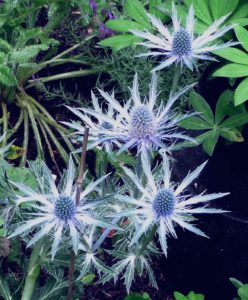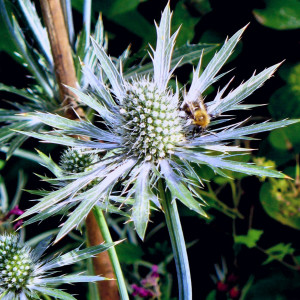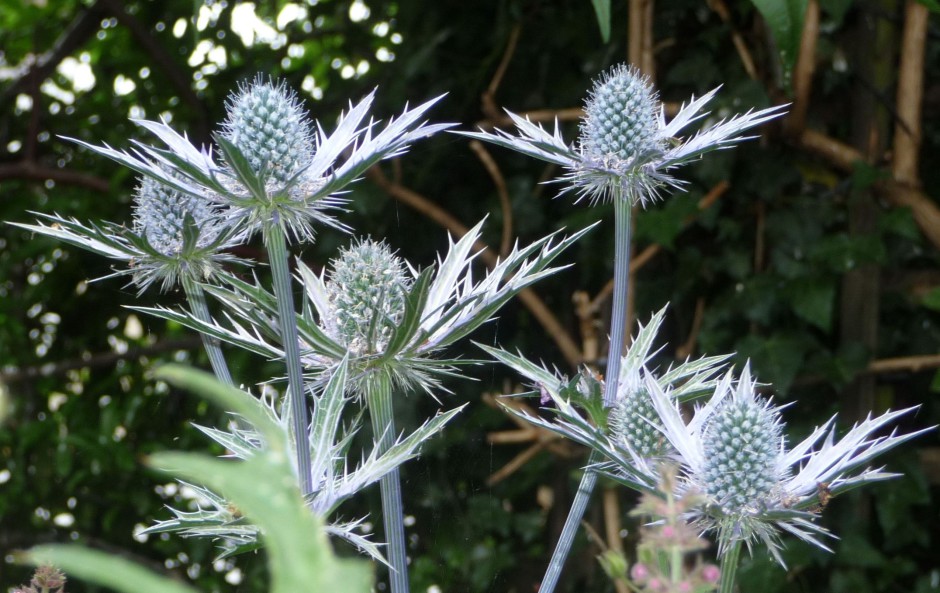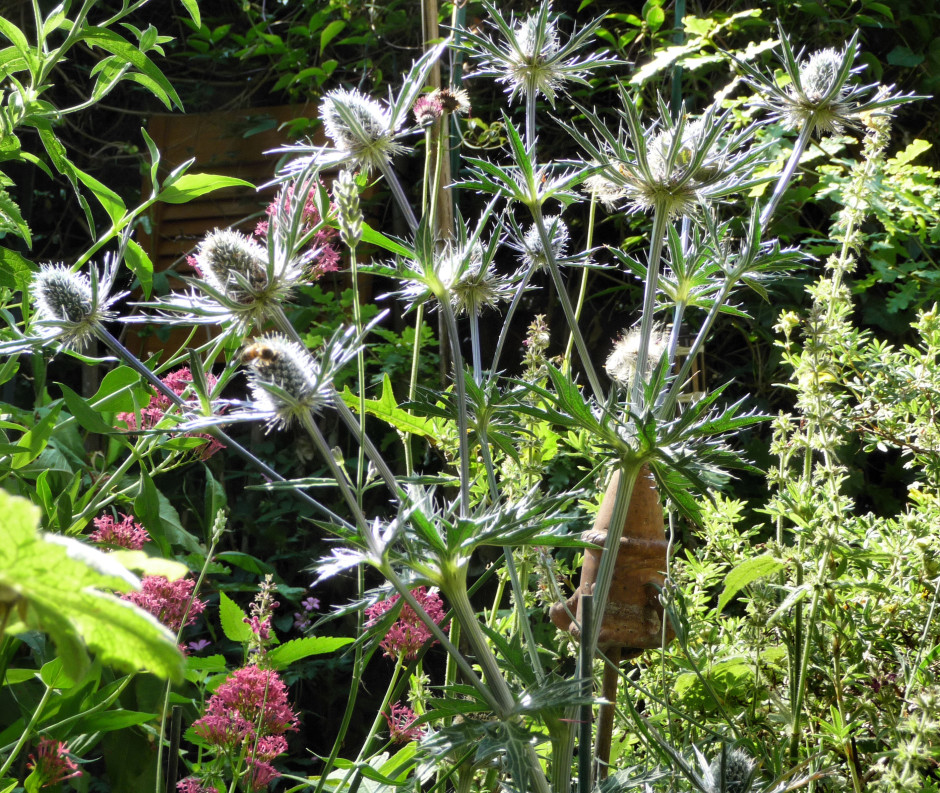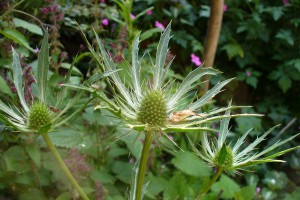SEA HOLLY (Eryngium)
Turkey, N Africa, coasts of most European countries
The spiky, metallic flowers of this elegant plant are called ‘architectural’ by garden designers. The Sea Holly requires full sun, at least 6 hours of it – & good drainage. It tolerates wind, drought, salt spray & sandy soils. Best not planted too close to a path, as the steely spikes are quite sharp. Most will flower in July or August, some will still be in bloom in October.
After its season has ended, the dried Eryngiums can be left in place through the winter. They look striking coated with frost.
Bees’ Favourite.
Wikipedia quotes Falstaff, praising the Eryngium as an aphrodisiac. Bees, Butterflies & other pollinators are unbothered by any of that, & seek out the Sea Holly for its nectar. www.saga.co.uk. > Lifestyle > Gardening >
Edible
The native Sea Holly (Eryngium maritimum) likes sandy soil. Its flowers, which bloom from June to August, are followed by egg-shaped fruits. Its roots, which can reach 2 metres (6 feet) in length (!) were dug up and roasted, or candied and eaten as sweets (‘Eryngoes’).
FOOD FOR FREE, Richard Mabey, Harper/Collins, 1972
Here at Highbury, Bees and other pollinators came to drink the nectar of Eryngium zabelii ‘Big Blue’. It survived its first winter and began to emerge from the soil the following spring. But its early growth was eaten, probably by mice or squirrels, as slugs and snails were not yet out and about. There was no ‘Big Blue’ that year.
The following spring, nearby plants shot up more quickly than ‘Big Blue’ and shaded it out, stunting its growth. Since then, with attention paid to keeping the neighbours trimmed short in spring. This year Eryngium ‘Silver Ghost’ was a new arrival to keep it company.
